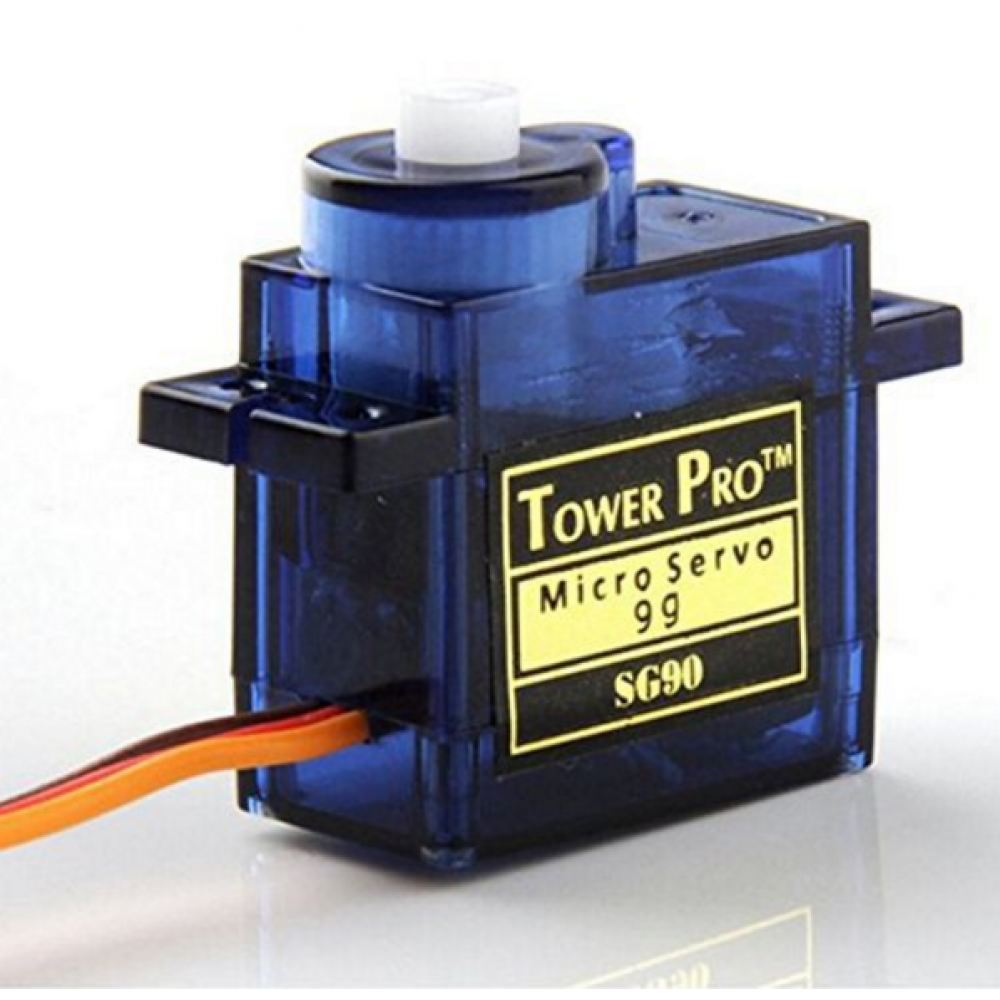
- Tower pro microservo install#
- Tower pro microservo mod#
- Tower pro microservo software#
- Tower pro microservo code#
Tower pro microservo install#
Raspberry Pi Headless Install Without A Display Guide – Link.
Tower pro microservo mod#

So, driving a servo directly from the Raspberry Pi might not work if requiring precision and steady control. The behaviour of the servo during control is much less smooth than when controlled by the Arduino.
Tower pro microservo software#
I believe the pulses, driving the servo from the Raspberry Pi, is software driven. Furthermore, I’ve included two different loop constructs that can be tested separately.
Tower pro microservo code#
The above Python code works similar to the Arduino servo sweep sketch. Save the above code to the Raspberry Pi and execute using something like the following in the Terminal: python3 servo_test.py #!/usr/bin/env python3 """ servo_test.py """ _author_ = "Mark Heywood" _version_ = "0.01" _license_ = "MIT" from gpiozero import Servo from time import sleep # Adjust the pulse values to set rotation range min_pulse = 0.000544 # Library default = 1/1000 max_pulse = 0.0024 # Library default = 2/1000 # Initial servo position pos = 0 test = 0 servo = Servo(17, pos, min_pulse, max_pulse, 20/1000, None) while True: # For statement example for pos in range(0, 20): pos = pos * 0.1 - 1 servo.value = pos print(pos) sleep(0.05) for pos in range(20, -1, -1): pos = pos * 0.1 - 1 servo.value = pos print(pos) sleep(0.05) # While statement example """ while test 0: pos = test * 0.1 - 1 servo.value = pos print(pos) test = test - 1 sleep(0.05) """ The red and black/brown wire of the servo was connected to 5v and ground on the Raspberry Pi.

The micro servo 9g was tested on the Raspberry Pi Zero W with the Servo signal wire connected to GPIO17 (Pin 11). Raspberry Pi Test Python Code Servo Motor Connected to the Raspberry Pi For the wiring, connect the servo yellow/orange signal wire to pin 9, then connect the red wire to 5 Volt, then black wire to ground on the Arduino. Next, upload the code to the Arduino board. Select the sketch called Sweep from the menu File>Examples>Servo. Micro Servo Test CodeĪrduino Servo motor Connected to the Arduino UnoĬode to test a connected servo is already available through the Arduino IDE. However, you do not have to own a CNC type of machine to use this software you can visualise your project using any material type that has a dimension. Fusion 360 is the CAD software I am using today which I use to build models for 3D printing. The servo motor is definitely a part worth saving as a 3D asset that you can use over and over again. Servo Motor3d Models Servo Motor 3D Models If there are any slight differences between different suppliers, you can adjust the 3D model to fit when you eventually acquire the micro servo. But I’m confident that they will produce a close enough 3D model. I don’t declare that the dimensions above are spot-on. Drawings with Dimensions Servo Drawing and Dimensions However, when connecting more than one servo to the controllers, you may need to create a separate 5 Volt power source to supply the servos with enough current. Servo Interface Lead Micro Servo Wire Connection Labelsįor a single servo, the wires can be connected directly to the Arduino or Raspberry Pi.



 0 kommentar(er)
0 kommentar(er)
